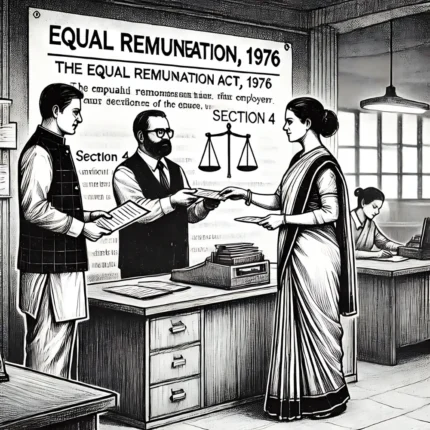Understanding The Concept Of Remand
Overview
A person cannot be detained without a magistrate’s order beyond 24 hours, as per Section 57 of the Bharatiya Nyaya Sanhita (BNS). Special permission for detention beyond 24 hours is granted under Section 167, known as remand.
Remand can be of two types: Police Remand, where the police request custody for further investigation, and Judicial Remand, where the magistrate orders custody until the trial is concluded.
An application for remand must be submitted to the magistrate with sufficient reasons for continued detention, as per the BNS.
Introduction
- “Remand” refers to the detention of an accused person in custody before their trial begins.
- Under Article 21 of the Indian Constitution, the right to life and personal liberty is guaranteed.
- Article 22(2) mandates that arrested individuals must be presented before a magistrate within 24 hours, unless specified otherwise by law.
- The Bharatiya Nyaya Sanhita (BNS) further strengthens these protections with defined procedures for detention and remand.
- Remand occurs during the investigation or trial process and can be pre-cognizance (under Section 167) or post-cognizance (under Section 309) in nature.
- Remand ensures the accused is held in a designated facility until their trial is completed.
Procedure In Remand
Under Section 41 of the Bharatiya Nyaya Sanhita (BNS), a police officer can arrest an individual for a cognizable offense or if there is suspicion of involvement in such an offense without a warrant. However, according to Section 57 of the BNS, the officer cannot detain the arrested individual for more than 24 hours without special permission from the magistrate. Under Section 167 of the BNS, if the investigation is not completed within 24 hours, the police must present the accused to a judicial magistrate. The accused cannot be held in police remand for more than 15 days and may be transferred to judicial custody until bail is granted. Remand refers to pre-trial detention of the accused.
A magistrate has the authority to grant judicial or police remand and can detain the accused for longer than 15 days if necessary. However, the maximum detention allowed is 90 days for serious offenses (punishable by death, life imprisonment, or a sentence of 10+ years), or 60 days for other offenses. Section 167 applies only while the trial is pending, and once the specified period expires, the accused is entitled to bail unless the investigation is completed in time, as per the provisions of the BNS.
Types Of Remand
Remand can generally be categorized into police remand, judicial remand, and transit remand. Below is a brief description of each type:
Transit Remand: This occurs when the accused is arrested outside the jurisdiction of the court. A request for transit remand is made to the court with jurisdiction to transfer the accused to the appropriate place. Under Section 167 of the BNS, transit remand is implied and is considered a form of police remand, meant for transferring the accused for production before the proper magistrate. This process ensures that the accused is brought under the jurisdiction of the correct court for further proceedings.
Judicial Remand: This involves sending the accused to a jail or another facility under judicial authority. The custody of the accused remains under the judiciary’s control, and interrogations are conducted with the magistrate’s permission. In Gian Singh v. State of Delhi Administration, it was held that conducting interrogations in judicial custody does not alter the nature of the custody and remains under the oversight of the judicial system.
Police Remand: This refers to sending the accused to a police station jail, under police supervision. Police remand is typically requested for investigation or interrogation and helps prevent the accused from destroying evidence. According to Section 57 of the BNS, the police cannot detain the accused for more than 24 hours without special permission from the magistrate. This ensures that detention for investigative purposes does not exceed the legal limits and is always monitored by judicial oversight.
Remand Application
Section 167 of the Bharatiya Nyaya Sanhita (BNS): This section states that the officer in charge of the police station, or any individual conducting the investigation (who is not below the rank of sub-inspector), must make the remand application. This application is made when the officer believes the investigation cannot be completed within 24 hours. The application is then presented to the magistrate, outlining the reasons why further detention is necessary for the investigation to proceed.









Reviews
There are no reviews yet.